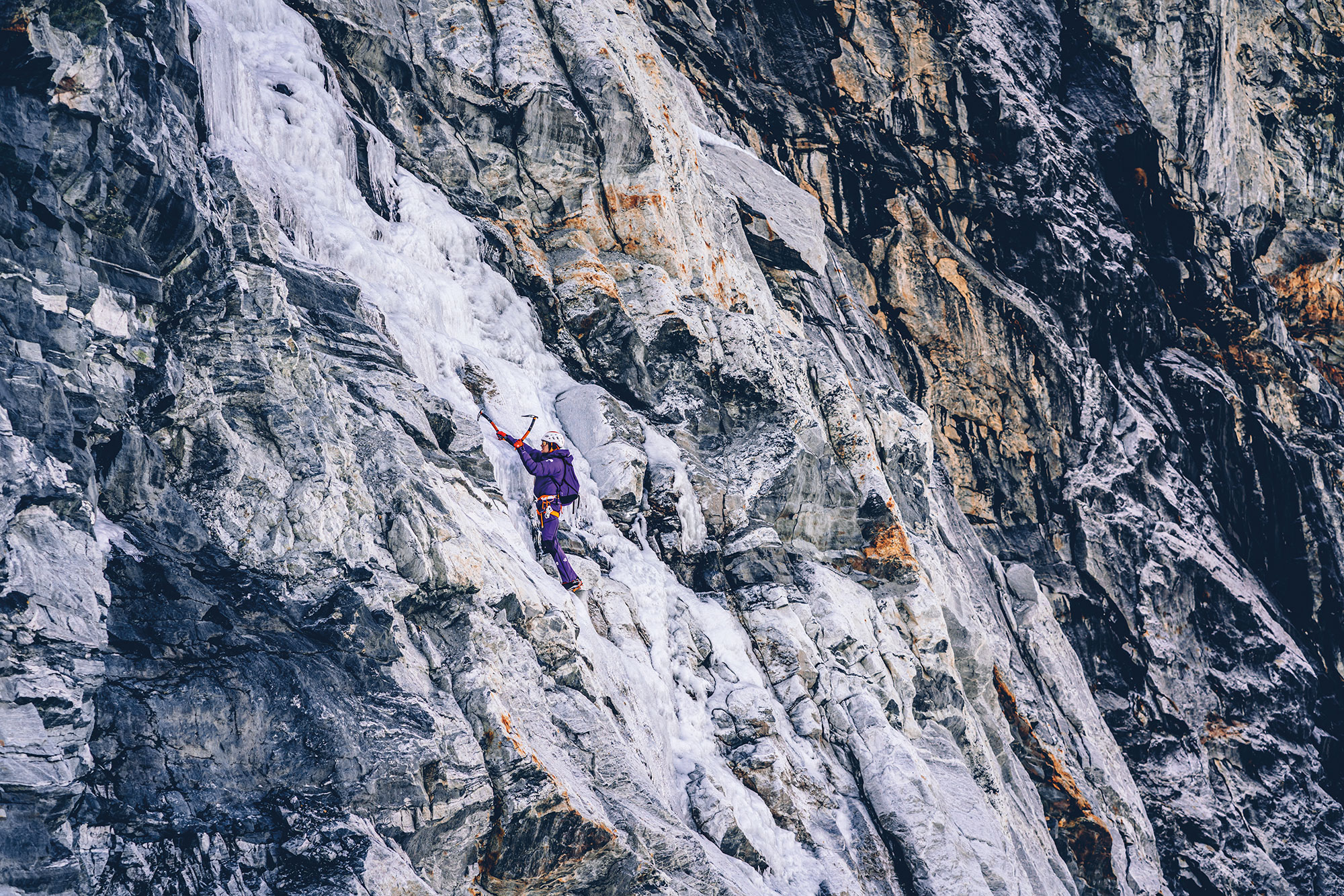With: The North Face
ITW: Hervé Barmasse
By: Ilaria Chiavacci
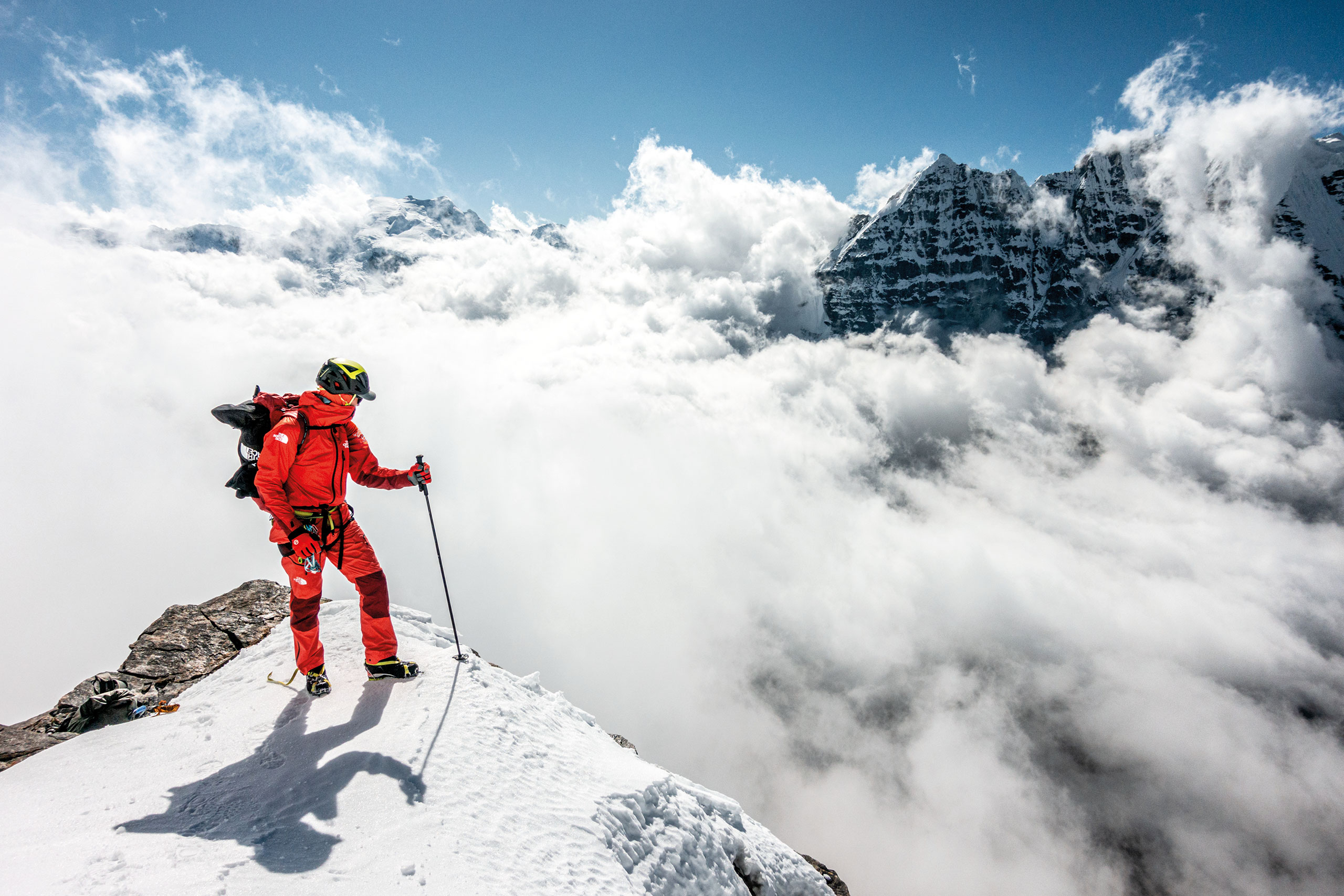
Advanced Mountain Kit by The North Face: Hervé Barmasse’s test
The North Face launched a kit of products that promises to be revolutionary for the mountaineering world, word of the man who helped to design and test it, the king of the Matterhorn Hervé Barmasse.
Redefine the contours of what is considered possible: mountaineering faces the deformation of reality as we know it and it is able to reverse the perception of what is or is not feasible. The credit goes to mountain giants such as Hervé Barmasse, but also to those who invest in research and development to design increasingly cutting-edge products.
With Advanced Mountain Kit, The North Face has created the most sophisticated kit of mountaineering products in the world: five layered technologies that maximize performance while reducing weight. For three years, the designers of the brand worked side by side with their team of athletes to arrive at the definition of this equipment: the goal was to create a synergy between the layers, able to guarantee waterproofness, warmth and, at the same time, fluidity and freedom of movement even at the most extreme altitudes.

Hervé Barmasse is a mountaineer, mountain guide, director, producer and athlete of The North Face global team and the man who contributed to the conception and testing phase of the Advanced Mountain Kit together with other incredible athletes: David Göttler and Andres Marin. Also part of the team were Hansjörg Auer, David Lama and Jess Roskelley, hit by an avalanche on Howse Peak on the Canadian Rocky Mountains.
“The team was made up of six people with the aim of creating something that did not exist, something that was a dream for us: our imagination as mountaineers pushed us to want a lighter, warmer and more performing type of equipment. The North Face made itself available to make our dream come true knowing that what we would help create would give anyone the opportunity to improve their performance in the mountains.”
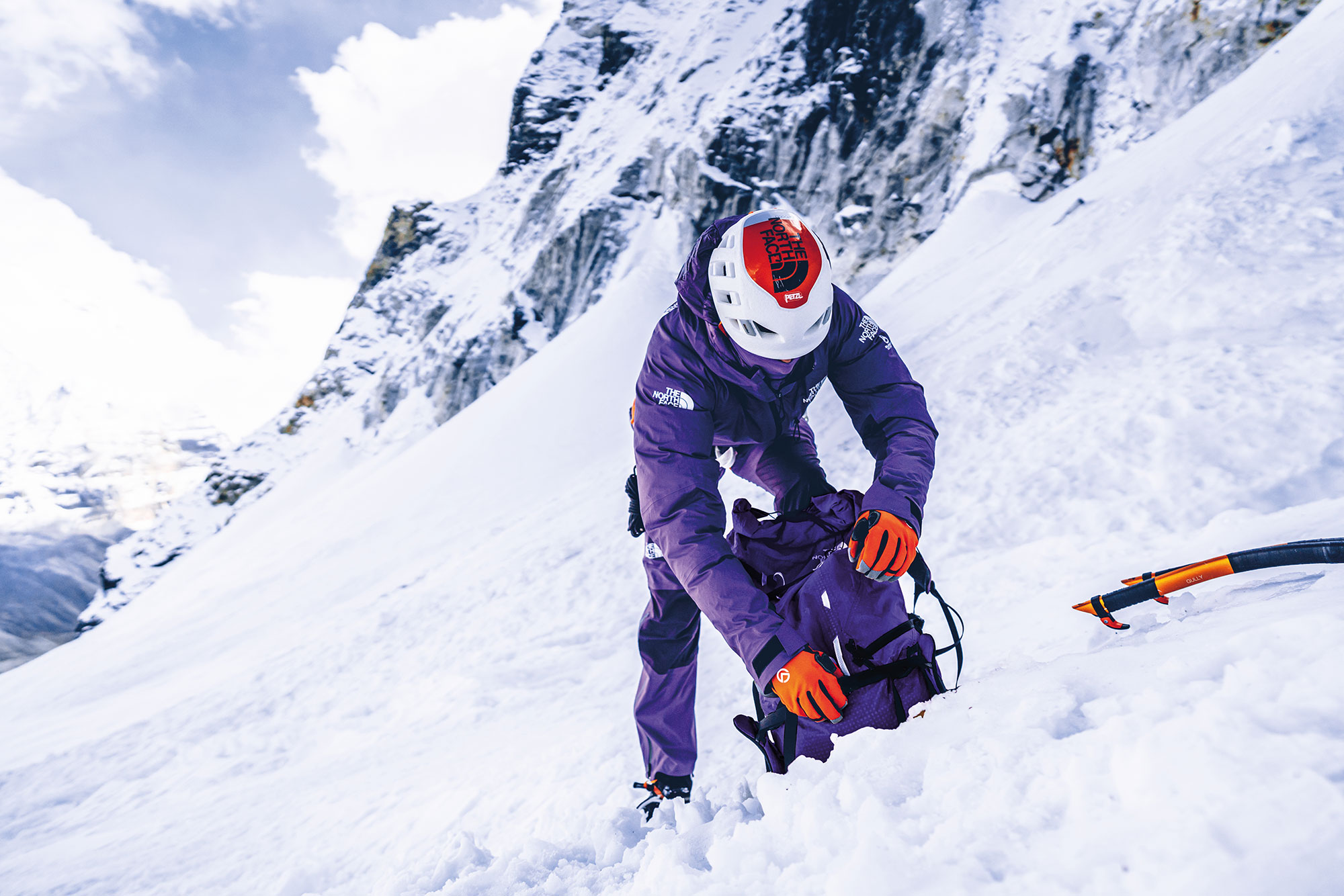
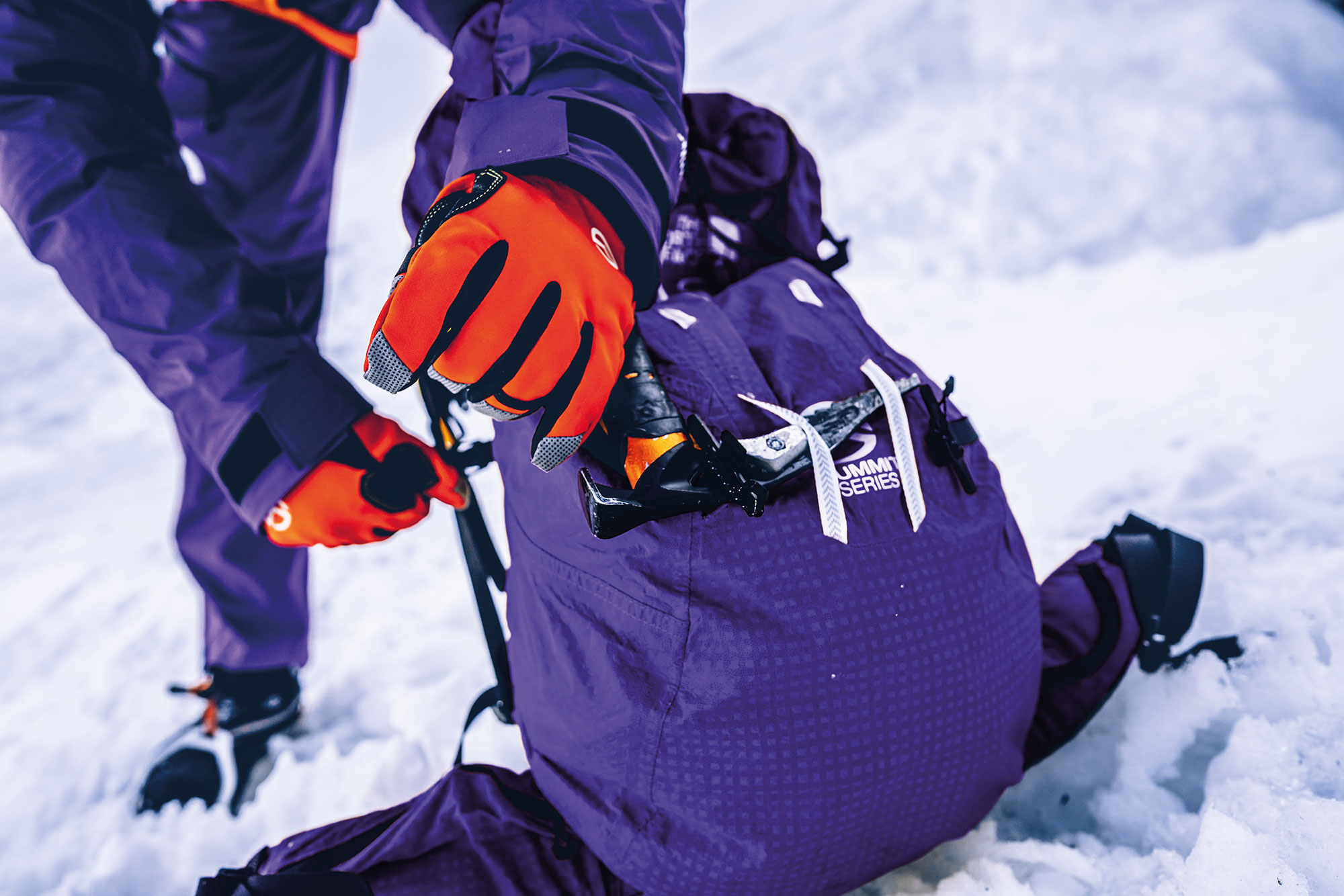

How does Advanced Mountain Kit make the difference in terms of performance?
In the history of mountaineering there are products that have completely revolutionized the way of going to the mountains: think about the carabiner, for example, or crampons or Vibram soles. AMK represents an equally epochal turning point because it is warmer than the clothes usually used in the Himalayas, but much more manageable in terms of weight and fit: beyond the style of climbing, this represents a real turning point.
Has the right equipment ever saved your life?
It surely happened, in the mountains you often come in contact with death without realizing it. In 2017 I climbed the south face of Shisha Pangma with David Göttler, the forecasts gave us a 24 hours window of good weather: we climbed it in 13 in pure alpine style, therefore without high altitude porters, without fixed ropes or cylinders of oxygen. It seemed incredible to us and that result was also achieved thanks to the equipment, which at the time also included the Ventrix jacket.
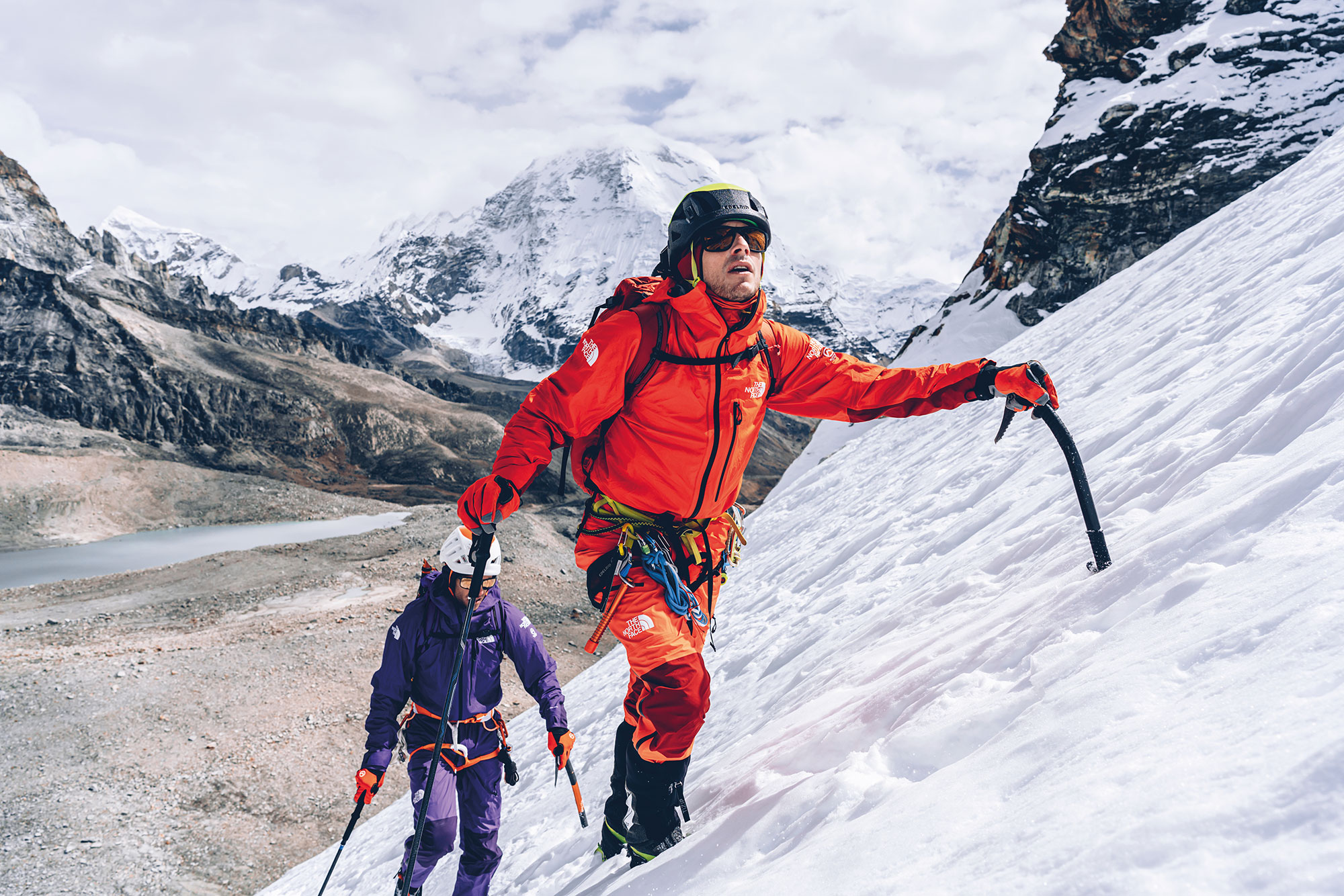
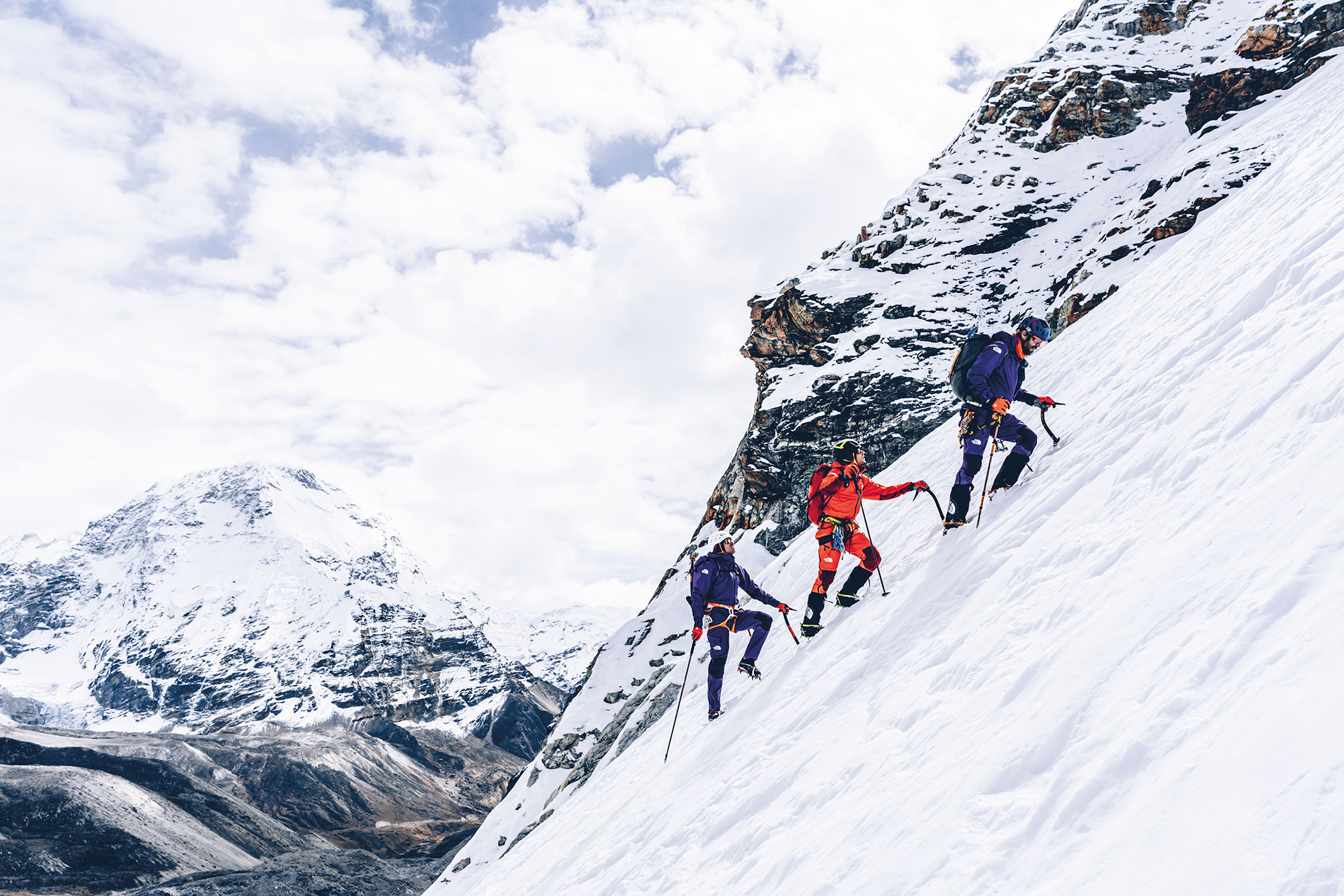
Next challenge?
I’ll reveal it on December 25th. Speaking about very high altitude, I’d like to open a new route on a eight-thousander, clearly in alpine style, which means in a clean way, without porters, without oxygen, without pre-set up camps and without fixed ropes, which are all elements that dirty the route. For what is my vision, either I climb on a summit with my strength and my abilities and leave it clean after, or I prefer not to climb it. The only way to leave no trace of your passage is to carry up and down all the equipment you need to climb. Unfortunately, today 99,9% of mountaineers who climb 8000m peaks do not have this same vision. Those with an immense ego believe that nature can be bent to the will of man, but that’s not true. Having more and more examples of this kind, the more we will continue to leave the mountain dirty without asking ourselves what and how much damage we are really doing.
Messner, the king of all eight-thousanders, appointed you as his heir…
I’ve climbed an eight-thousander only once. But he has always gone beyond the achievement of a goal in itself, so much so that at the time I had not yet climbed any. For Messner it was important how mountaineering is done, and that can be done both in the Himalayas and in the Alps: for him the concept of approaching the mountains, the search for new goals, was crucial. The best mountaineer today is not the one who face an epic challenge, but the one who respects the environment. A peak is not judged by its height, but by the emotions it leaves you.
Mountain guide, director, writer, mountaineer. In which of these roles do you recognize yourself the most?
I’m just a mountain guy.

